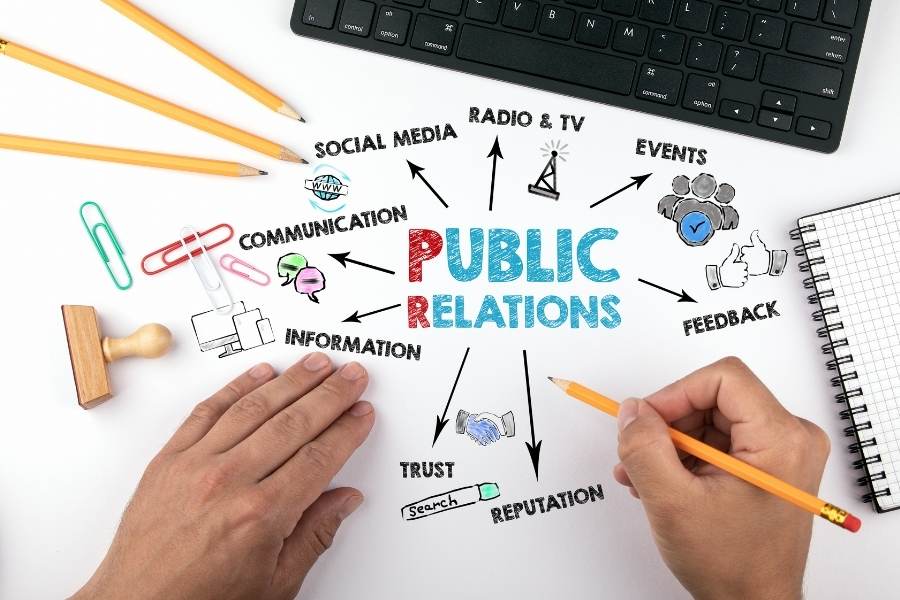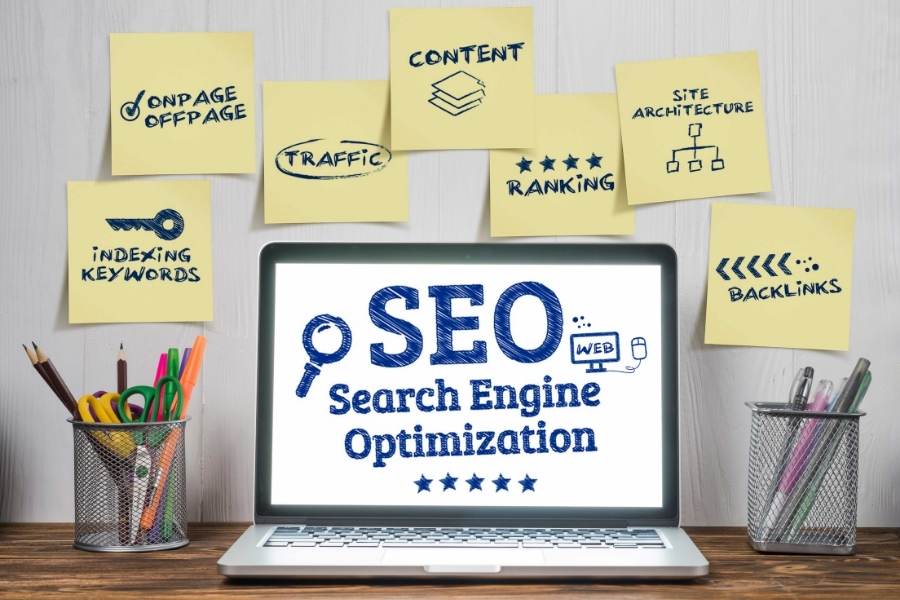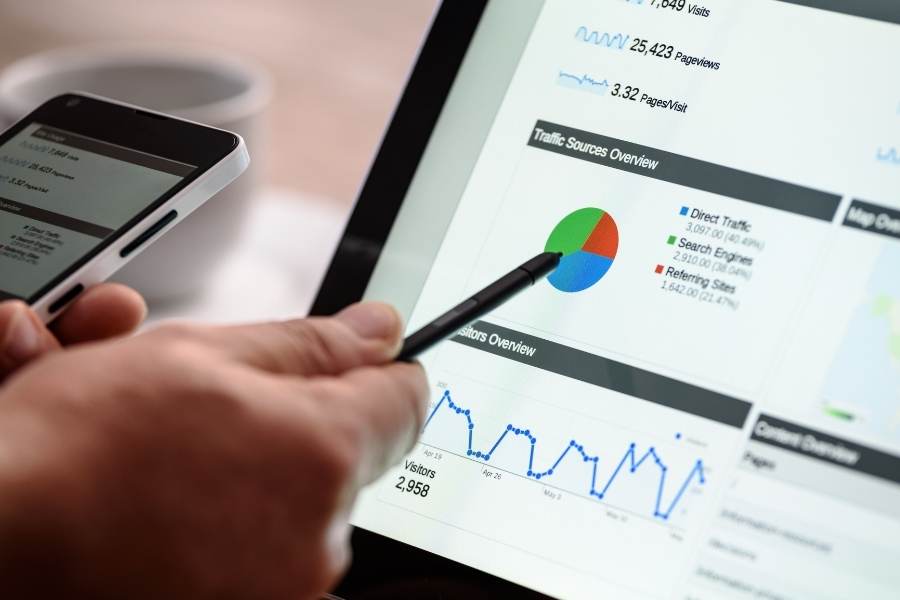Learn what Digital PR is and how you can use it to increase your brand presence, brand trust, and search engine optimization (SEO).
You might be familiar with the term “Digital PR”, it especially pops up when trying to increase brand awareness for your company. If you haven’t heard about it yet, there’s no better time than the present to learn more about it.
It’s important to know exactly how you can benefit from digital PR. That being said, there are a lot of details regarding the specifics of digital PR, which will be covered in this article.
So, let’s touch on all the nitty-gritty details about digital PR, how it’s different from traditional PR, and how it boosts SEO (which will be explained too, just in case).
Contents
What is Digital PR?
Simply put, Digital PR is the practice of increasing a brand’s online presence by intentionally releasing information to the public, online, in a way that reaches a much wider audience than offline PR normally would.
This is because digital PR campaigns have the advantage of the internet, which is how we can easily make connections with people across the globe.
Digital PR helps you reach your target audience across many different platforms and in many different shapes and content formats, and establish relationships with both people and other companies in your industry.
For example, you could be featured in an online trade magazine or have a comment on a third-party site – whether it is a niche industry or more general. campaigns.
For example, you can feature your brand on websites, podcasts, and social media platforms, all of which relate to your target audience. But what are the specific differences between digital and traditional PR?
5 Differences Between Digital vs Traditional PR
#1. Strategies
Traditional PR strategies focus on offline channels of communication (for example, print media), which is why their strategies are more fixed.
On the other hand, digital PR takes up the responsibility of aligning public relations with the brand’s wider strategy online. This would then include generating leads, increasing SEO, and inbound marketing.
#2. Performance
While traditional PR can have the effect of increasing a company’s internal communications and employee relationships, digital PR can cover the entire online profile of the company.
The difference here is that the former has an impact on the inside of the company, while the latter focuses more on the external, namely the surface, which the target audience will see.
#3. Messaging
Traditional PR has a direct message. Additionally, it is a one-way corporate communication, which can address the target audience directly, but in a way that portrays it as focusing on sales.
Digital PR is more fluid. It creates content in a subtle way, which will motivate bloggers, vloggers, and other external sources to mention them on their platforms and in their communities.
The importance of this difference is that in digital PR campaigns, you can earn mentions much easier, and work your way to spread your brand name more fluidly.
Traditional PR offers a more fixed method of featuring your brand name, whereas digital PR can have a larger quantity of outsourcing.
#4. Engagement
As mentioned before, communications in traditional PR campaigns flow in a one-way street.
This automatically means that interaction and shareability are limited because the platforms used rarely offer the stage for a reply or reaction to the campaign in question.
In digital PR this is not the case. The two-way communication offered by online platforms makes it highly interactive for the target audience, mostly because of the social sharing that occurs.
For example, on Facebook and Twitter, you can react and reply to shared posts as much as you’d like.
#5. Comms Channels
Traditional PR has limited comms channels, mainly predominating in the general press, printed publications, radio, and TV. Basically, everything that is not an online channel or platform.
Digital PR has the freedom to utilize everything that is online, including informal channels of communication. Such are websites, social media platforms, blogs, influencer campaigns, online news, video portals, and more.
5 Ways Digital PR & SEO Help Your Brand
Before we get into the benefits of Digital PR, it is important to briefly explain what SEO is because it is crucial for a digital PR campaign.
Search engine optimization (SEO) is a combination of practices, which aim to increase your website’s presence on search engines. The number one way that your target audience can discover your website is through search engines.
That is why keeping track of your SEO rankings and having a strategy for SEO is good for improving the quality of your content and the quantity of traffic to your website.
Combining digital PR with SEO is the best way to cement the highest reach and ultimately the most success in your campaign.
#1. Press releases boost SEO
Like any other PR campaign, press releases are a must. Digital PR includes press releases on many different platforms, and the quantity of outsourcing is much larger than usual – you can have press releases much easier due to the easier contact with journalists and bloggers.
It is important to keep your keywords in mind when crafting your content. This will ensure a higher SEO ranking, which in turn means that a larger target audience will find your brand’s content much easier.
Ultimately, this strengthens credibility and makes more connections to the search engine traffic, which increases your chances of people discovering your brand even more.
#2. Increase website traffic
Immediately after is the second point, which is linked to the first. Increasing your website traffic is a natural byproduct of doing digital PR the right way.
Your brand will be mentioned more and more since you have all the right keywords and your articles are doing good in SEO rankings.
Because of this, there is more reach, and the more people are exposed to your website, the higher the likelihood of more people visiting your website.
#3. Establish brand trust
PR experts excel at portraying your brand in the best possible light. By securing positive reviews and releasing engaging content, your brand image will flourish with time.
Articles that fall within the system’s category for being SEO-friendly high-quality, large visibility, etc., will place your brand in a margin with higher credibility.
External sources (bloggers and journalists) reviewing your company will further increase the trustworthiness of your brand.
#4. Generate leads and sales
Following this logic so far, it is obvious that your online presence, when executed properly, leads to a large target audience.
This also means that your brand is being mentioned more often, especially around the environment of that target audience. This in turn translates to lead generation from some of the people that visit your site and essentially leads to more sales.
With digital PR, this explained process increases in quantity and so in likelihood, because of the widespread nature of the campaign.
#5. Put your name on the map
Lastly, digital PR campaigns excel at putting your name on the map. This means your brand will establish itself as a highly credible and trustworthy authority in the industry it’s involved in.
By generating more traffic, and publishing high-quality SEO-friendly articles, which will appear at the highest possible positions in search results, your brand will generate a reputation that will eventually work for you.
The importance of it all is that this process will elevate your brand to be a credible source of information with highly esteemed trust and value.
Additionally, your brand will place a face and a name as a thought leader (e.g. the founder, CEO, etc.). Thought leadership will resonate with the target audience more than just a simple faceless brand and close off the deal on your brand presence.
The differences between digital and traditional PR set the margin for digital PR’s excellence. The wider spread of digital PR campaigns allows for this method of increasing brand presence to generate much higher results, both in quality and quantity.
Of course, there are more details to pay attention to and more complex things to consider. But despite all that, a well-established team of PR experts can work their way around the abundance of information needed.
You already know how digital PR can boost your brand presence, all you need to do is set your goals and prepare to be placed on the map.
© 2022 – 2024, Matias Rodsevich. All rights reserved.

Matias is the Founder and CEO of PRLab. He has over 10 years of experience in the world of Public Relations and Digital Marketing, and has worked with numerous tech startups to successfully complete campaigns that boost their brand image and puts the company on the map in their sphere of influence. He founded a PR and Marketing Community, with over 1300 members, and wrote a book on PR and Marketing, giving an educational and entertaining study with examples and lessons in the sphere.
Discover more from Business & Branding Tips
Subscribe to get the latest posts sent to your email.




